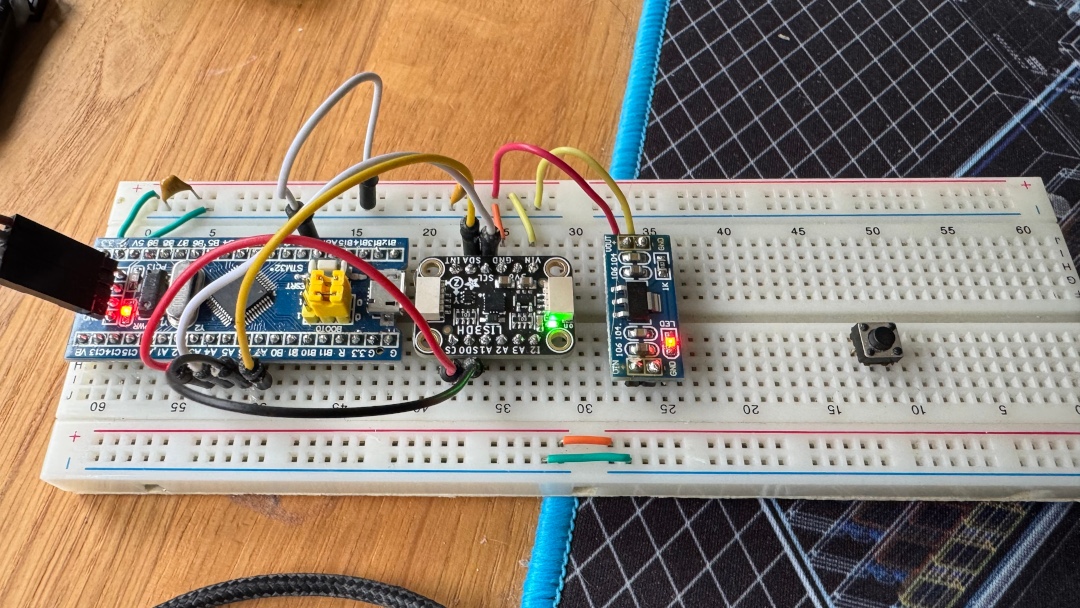It began with a spark—a dormant passion reignited after many years away from motorcycling. Life had steered me in different directions, away from the saddle, but something deep inside pulled me back to the thrill and freedom that only riding offers.
Returning to motorcycling after such an extended hiatus was daunting yet exhilarating. I vividly recall my first CBT session: the nerves, the good-natured laughter at my clumsy mistakes, and the sheer joy when everything finally clicked into place. It was during this session that a critical moment of inspiration occurred. My instructor casually suggested lightly applying the brakes during engine braking to alert drivers behind that I was slowing down. Given motorcycles’ inherent lightweight design and strong engine braking, the risk of being rear-ended was significant.
It struck me profoundly how something so vital could be left to mere habit—this realization triggered my engineering instincts. Relying solely on human memory and habitual action seemed inadequate and unreliable. I wondered: “Could technology automate this essential safety process?” Thus, BrakeBright was conceived—a smart brake-light system specifically tailored for motorcycles. BrakeBright intelligently detects when the motorcycle slows due to engine braking, activating the brake lights even before the rider manually applies the brakes. Moreover, during intense braking scenarios, it flashes proportionately to the braking intensity.
Curious to see what was already available, I purchased one of the few similar products on the market. To my surprise, it relied solely on a basic tilt switch, rattling excessively during rides despite claims of “advanced technology.” The device was not only ineffective but also potentially hazardous. Drivers instinctively focus on brake lights; unless the brake light itself clearly indicates deceleration, most would fail to notice.
Interestingly, adaptive brake light technology already exists in high-end vehicles. BMW’s dynamic brake light, for example, flashes during emergency braking to alert trailing drivers, greatly enhancing road safety. Similarly, KTM motorcycles incorporate an Adaptive Brake Light system for better visibility during sudden deceleration. However, such advanced safety features have traditionally been reserved for premium models. My vision for BrakeBright was to democratize this essential safety feature, making it accessible to every rider through a simple, straightforward modification. Installation requires no special tools—using posi-tap connectors, BrakeBright easily integrates with your motorcycle’s existing wiring in just minutes.
Developing BrakeBright involved starting with a simple motion sensor and microcontroller unit (MCU) on a breadboard. Countless hours went into refining the device—tweaking, programming, and improving—long before I even had my own motorcycle license. As the idea evolved, I designed the initial printed circuit board (PCB) prototype, carefully hand-soldering tiny surface-mount components late into the night.

Testing presented another unique challenge—I initially didn’t own a motorcycle. My friend Johny generously volunteered his bike for field testing. I sent each prototype iteration to him, and he diligently provided feedback that guided continuous improvements. This iterative process spanned several months, steadily bringing BrakeBright closer to perfection.
By the third PCB version, I had my motorcycle and could directly test and refine the system. Challenges arose frequently: vibration jitter interfering with sensor accuracy, synchronization issues between sampling rates and engine RPM, and false positives during long rides. To visually verify BrakeBright’s actions, I installed an LED at the front of my motorcycle, enabling real-time monitoring. This hands-on method significantly improved reliability, particularly the flashing-on-hard-braking feature. BrakeBright employs a sensitive accelerometer to detect velocity changes accurately, determining whether the motorcycle is slowing due to engine braking or active rider input. It’s also engineered to be fully waterproof and vibration-resistant, ensuring dependable performance under any riding conditions.

Thousands of miles of rigorous testing followed, notably including Scotland’s iconic NC500 route alongside Johny—misty mornings, sweeping highland bends, and dramatic descents providing the ideal proving grounds. One vivid memory stands out: braking sharply on a tight, downhill hairpin near Applecross Pass, I observed BrakeBright’s flash sequence activate exactly as intended—clear, swift, and unmistakable. Riders especially appreciated BrakeBright’s flashing feature, noting how it significantly improved rearward visibility during intense braking situations.
Another challenge emerged when the initial BrakeBright unit required specialized equipment for firmware updates. Committed to empowering users, I developed a subsequent version incorporating a USB port. Currently, I’m finalizing user-friendly software utilities, enabling riders to easily update BrakeBright firmware, customize features, and personalize the system to match individual riding styles and preferences.
Months of effort culminated in the thrilling moment the first production batch arrived. I still recall opening the box at my workbench—the scent of fresh solder and cardboard filling the air—and seeing the finished BrakeBright units gleaming. Holding one in my hands, experiencing its meticulous craftsmanship and sleek design realized exactly as envisioned, was profoundly rewarding. I felt immense pride, a hint of nervous excitement, and deep satisfaction.
Yet, this is merely the beginning. The initial shipments and early customers symbolize far more than sales—they validate that risk-taking, passion, and belief can transform ideas into reality. With an open feedback loop and software upgrade tools nearing completion, I’m eager to see riders embrace BrakeBright, making it uniquely theirs.

If you’re interested in BrakeBright, want to test it, or simply enjoy discussing motorcycles and technology, please reach out or follow along for updates.
If you want to support my journey, consider purchasing a BrakeBright unit here . Your support means the world to me and helps fuel my passion for making motorcycle riding safer and more enjoyable for everyone.
